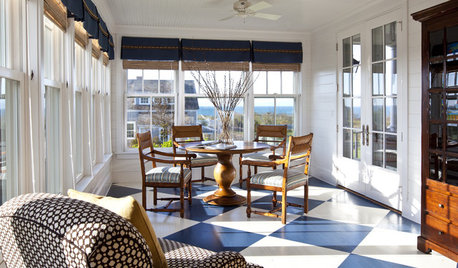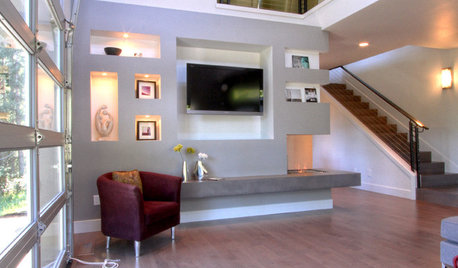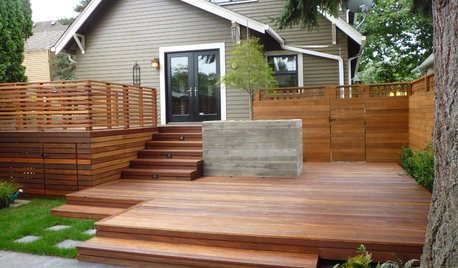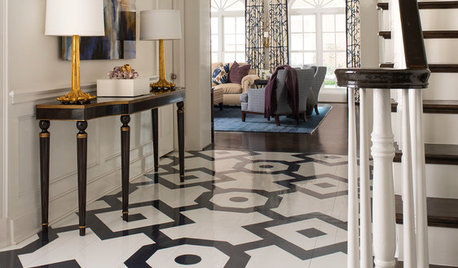gaps in hardwood floor
babyboy91
17 years ago
Related Stories

HOUSEKEEPINGHow to Clean Hardwood Floors
Gleaming wood floors are a thing of beauty. Find out how to keep them that way
Full Story
MATERIALSWhat to Ask Before Choosing a Hardwood Floor
We give you the details on cost, installation, wood varieties and more to help you pick the right hardwood flooring
Full Story
REMODELING GUIDESTransition Time: How to Connect Tile and Hardwood Floors
Plan ahead to prevent unsightly or unsafe transitions between floor surfaces. Here's what you need to know
Full Story
FLOORSHow to Paint Your Hardwood Floors
Know how to apply nail polish? Then you can give your wooden floors a brand-new look
Full Story
REMODELING GUIDESContractor Tips: Smooth Moves for Hardwood Floors
Dreaming of gorgeous, natural wood floors? Consider these professional pointers before you lay the first plank
Full Story
GARDENING AND LANDSCAPINGThat Gap Under the Deck: Hide It or Use It!
6 ways to transform a landscape eyesore into a landscape feature
Full Story
GARDENING AND LANDSCAPINGBoardwalks Bridge the Gap to Nature
Previously inaccessible parts of the landscape can roll out the welcome mat with help from these clever and beautiful pathways
Full Story
GREAT HOME PROJECTSWhat to Know Before Refinishing Your Floors
Learn costs and other important details about renewing a hardwood floor — and the one mistake you should avoid
Full Story
DECORATING GUIDES9 Tasteful Ideas for Traditional Living Room Floors
From a crisply styled area rug to beautifully bare hardwood, these flooring ideas will keep your living room clean and classic
Full Story
FLOORS6 Alternative Flooring Ideas to Kick Up Your Style
Rubber, cork, concrete and other materials are worthy options in lieu of hardwood or tile
Full Story







rudysmallfry
glennsfc
Related Professionals
Ahwatukee Flooring Contractors · Albuquerque Flooring Contractors · Framingham Flooring Contractors · Glendale Flooring Contractors · Lakewood Flooring Contractors · Parma Heights Flooring Contractors · Raleigh Flooring Contractors · Redmond Flooring Contractors · Verona Flooring Contractors · Chatsworth General Contractors · Havelock General Contractors · Hercules General Contractors · Merrimack General Contractors · Rock Island General Contractors · Wheeling General Contractorsbabyboy91Original Author
glennsfc
babyboy91Original Author
babyboy91Original Author
floorguy
brucerussell
wmwalker
glennsfc
hairmetal4ever
glennsfc
varenovator
glennsfc
brucerussell
russmahogany
floorguy
russmahogany
floorguy
russmahogany
floorguy
varenovator